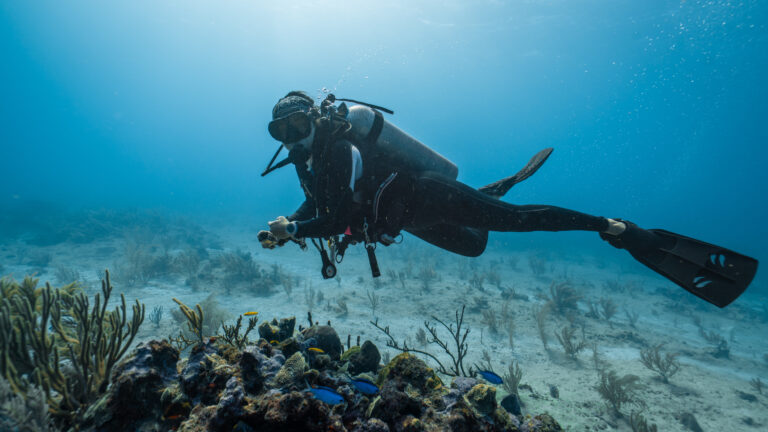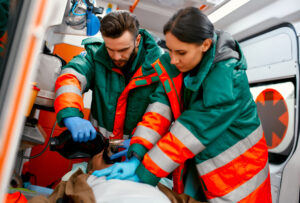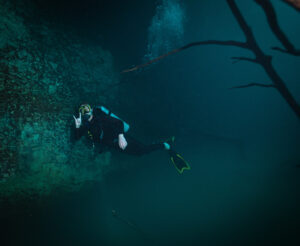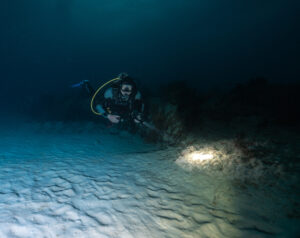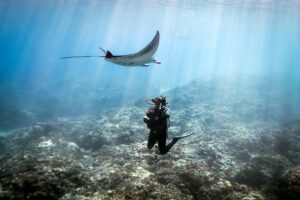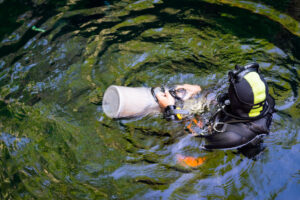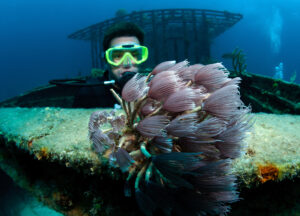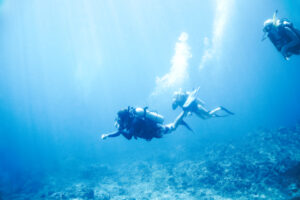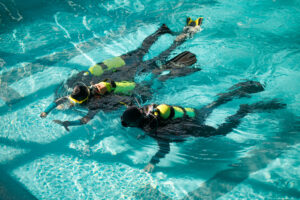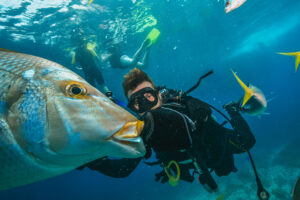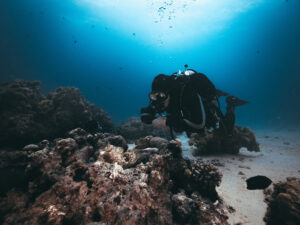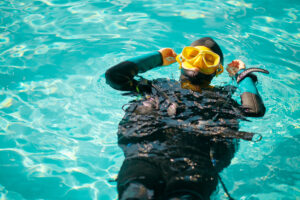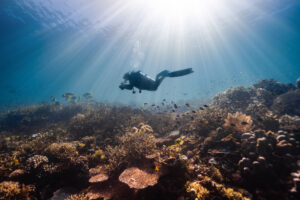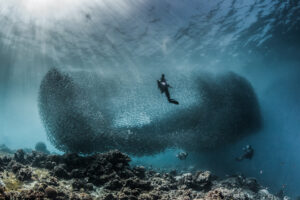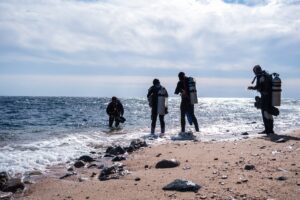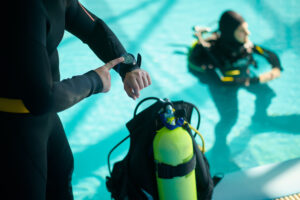What is a Reverse Squeeze?
A “Reverse Squeeze” is a phenomenon experienced by scuba divers when ascending from a dive, where an inability to release pressure from enclosed spaces in the body results in pain or discomfort. These enclosed spaces typically include the sinuses, the middle ear, and the area inside the diving mask.
Underlying Physics
The discomfort caused by a Reverse Squeeze is grounded in the physics of diving – specifically, the principle of Boyle’s Law, which states that the pressure and volume of a gas have an inverse relationship when the temperature is held constant. As a diver ascends, the external pressure decreases, causing any gas trapped in enclosed spaces to expand. If this gas cannot be released, it places strain on the surrounding tissues, resulting in a Reverse Squeeze.
Affected Areas and Symptoms
Sinuses and Ears
Sinuses and ears are the most common areas affected by a Reverse Squeeze. These spaces are connected to the outside environment via small passages which can become blocked, trapping gas inside. During ascent, the trapped gas expands, causing pressure and pain. Symptoms may include a sensation of fullness or pressure, pain, difficulty hearing, tinnitus, and, in severe cases, dizziness or vertigo.
Diving Mask
Inside a diving mask is another potential site for a Reverse Squeeze. If a diver fails to equalize the pressure inside their mask during ascent, the relative negative pressure can cause a ‘mask squeeze.’ Symptoms include facial discomfort, redness, and, in severe cases, petechiae (small, red, pinpoint hemorrhages) around the eyes.
Prevention and Management
Equalization Techniques
Preventing a Reverse Squeeze primarily involves appropriate equalization techniques. For the ears and sinuses, this typically involves maneuvers such as swallowing, yawning, or using the Valsalva maneuver – forcefully exhaling against a closed airway, usually done by pinching the nose and ‘blowing.’ Divers should equalize early and often during both descent and ascent.
Mask Pressure Equalization
Equalizing mask pressure is a simpler process. Divers need to periodically exhale into their mask during ascent, either through their nose or by using a ‘mask purge’ button if their mask is equipped with one. This will allow the gas inside to escape and prevent a mask squeeze.
Dive Planning and Control
Maintaining control over ascent rates and planning dives properly can also help prevent a Reverse Squeeze. Divers should ascend slowly and steadily to give the body time to release trapped gases. If a diver feels the onset of a Reverse Squeeze, they should halt their ascent and attempt to equalize. If unsuccessful, a slow descent may reopen the passages, allowing gas to escape before attempting to ascend again.
Medical Implications
While typically not life-threatening, a severe Reverse Squeeze can cause complications such as barotrauma to the ears or sinuses, or damage to the eyes in the case of a severe mask squeeze. Divers experiencing severe symptoms, prolonged discomfort, or symptoms persisting after a dive should seek medical attention.
Impact on Diving Proficiency
A Reverse Squeeze is not just a physical phenomenon but also an aspect that can significantly affect a diver’s proficiency and performance underwater. The discomfort and pain can distract a diver, potentially leading to errors or accidents. Therefore, learning to manage and prevent a Reverse Squeeze is an essential part of diver training and skill development.
Advanced Diver Training
Advanced diver training programs typically include a focus on recognizing and managing potential issues like a Reverse Squeeze. These programs emphasize the importance of regular equalization techniques and controlled ascent rates. Divers are trained to recognize the early signs of a Reverse Squeeze and respond appropriately to prevent escalation of the issue.
Research and Studies
Research into the Reverse Squeeze phenomenon has provided important insights into diving physiology and the impact of changes in pressure on the human body. These studies have been instrumental in developing best practices for divers to prevent and manage a Reverse Squeeze. Research is ongoing, with the goal of improving safety and reducing the incidence of this and other pressure-related issues in diving.
Equipment Considerations
Certain types of diving equipment can also assist in the prevention of a Reverse Squeeze. For instance, masks with purge valves allow divers to equalize pressure inside the mask more easily. Similarly, certain types of earplugs are designed to allow easier equalization for the middle ear. However, equipment should never be relied upon to replace proper equalization techniques and safe ascent practices.
Scuba Diving Community and Education
The scuba diving community plays a significant role in education and awareness about the Reverse Squeeze. Veteran divers, instructors, and dive clubs often share experiences and knowledge about such pressure-related complications, contributing to a culture of safety. Online forums, blogs, and magazines often feature articles and discussions about the Reverse Squeeze, further spreading awareness and knowledge.
Key Takeaways
The Reverse Squeeze is a testament to the fact that while the underwater world offers unparalleled beauty and adventure, it also presents unique challenges that require understanding, skill, and respect. As divers, we are visitors to this underwater realm, and it is our responsibility to equip ourselves with the knowledge and skills needed to explore safely and responsibly. By understanding and managing phenomena like the Reverse Squeeze, we can ensure that every dive is a safe and enjoyable experience.
Understanding and managing the potential for a Reverse Squeeze is a crucial part of safe diving practices. By knowing how to properly equalize pressure in enclosed spaces and ascending in a controlled manner, divers can avoid the discomfort and potential complications associated with this phenomenon. As with all aspects of scuba diving, proper training and adherence to best practices can go a long way in ensuring a safe and enjoyable dive.

